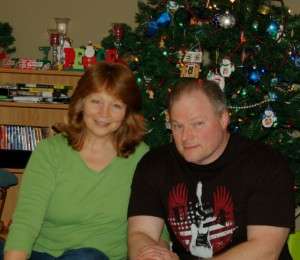God in my living
There in my breathing
God in my waking
God in my sleeping
God in my resting
There in my working
God in my thinking
God in my speaking
Be my everything
Be my everything
Be my everything
Be my everything
God in my hoping
There in my dreaming
God in my watching
God in my waiting
God in my laughing
There in my weeping
God in my hurting
God in my healing
Christ in me
Christ in me
Christ in me the hope of glory
You are everything
Christ in me
Christ in me
Christ in me the hope of glory
Be my everything
This song is a beautiful song that I heard in the Prayer Room at IHOP-KC.
In our homeschool studies, we studied about St. Patrick, and I read his prayer that he prayed every day. It was called St. Patrick’s Breastplate. It’s really long, so I won’t put the whole thing here. But here are some excerpts from it.
Excerpts from:
St. Patrick’s Breastplate Prayer
Christ be with me, Christ before me,
Christ behind me, Christ in me,
Christ beneath me, Christ above me.
Christ on my right, Christ on my left,
Christ where I lie, Christ where I sit,
Christ where I arise.
Christ in the heart of every man who thinks of me.
Christ in the mouth of every man who speaks of me.
Christ in every eye who sees me.
Christ in every ear that hears me.
Salvation is of the Lord.
Salvation is of the Lord.
Salvation is of the Christ.
May your salvation O Lord, be ever with us.
Do you see the similarities in the song and in St. Patrick’s prayer? They both reflect the fact that God and His Son, Jesus, are supposed to be everything to us. Everything in our lives is to reflect God and be done in Him and through Him.
So when I hear the song, “Everything”, I think of St. Patrick and his prayer.
St. Patrick is a hero in the faith that we should teach our children about. But you need to go to Catholic writings to find out what he really did. They believe in miracles, so they didn’t try to explain them away as coincidences or superstitions or legends.
I wrote a post about this last St. Patrick’s Day that you can find here. In it I mentioned a book by Kathie Walters, called Celtic Flames. I highly recommend reading this book to learn about true miracles that have been expunged from the history books of our time.
Here is some information about St. Patrick. The sources are Catholic and credible.
St. Patrick Raised the Dead – Many Times
For the blind and the lame, the deaf and the dumb, the palsied, the lunatic, the leprous, the epileptic, all who labored under any disease, did he in the Name of the Holy Trinity restore unto the power of their limbs and unto entire health; and in these good deeds was he daily practiced. Thirty and three dead men, some of whom had been many years buried, did this great reviver raise from the dead, as above we have more fully recorded. …
St. Patrick was a great missionary bishop who converted a whole land from paganism, overturning the religion of the Druids. He consecrated 350 Bishops, erected 700 churches, and ordained 5,000 priests. In less than 30 years the greater part of Ireland was Catholic. St. Patrick so consolidated it in the Christian faith that during the Protestant Revolt, Ireland was almost unique in its preservation of the Faith. Even today, people speak of “the faith of the Irish.”
It is hard, indeed impossible, to comprehend such a vast and enduring transformation without the visible support of God through great works and wonders. But that is what Christ promised to His Apostles, and it has been historically demonstrated in the well-attested lives of His great missionary saints.
Since St. Patrick is claimed to have worked 33 resurrection miracles, it seems a moral certitude that he truly must have worked at least a good number of such wonders, even if the count of 33 may not be exactly accurate. (Some details may be confused, and thus two slightly different accounts could actually refer to the same event.) It is only fair to report at least several of these.
* One day St. Patrick came to a place called Fearta. On the side of the hill two women had been buried. Patrick ordered the earth removed; in the Name of Christ, he raised them up. The two proclaimed that their idols were vain and that Christ was the true God. Along with the women, many bystanders were baptized. As the ancient writer observes, Patrick not only revived these two from a double death (both temporal and eternal death), but by this miracle he gave spiritual resurrection to many other souls.
* When Patrick came to Dublina he prophesied how great that small village would someday become. He also caused a fountain to spring up there. It happened that in the region nearby, the young son of the King lay dead in his chamber. The sorrow over his death was compounded when it was learned that his sister, who had gone to bathe in the neighboring river, had drowned in midstream. Her body was finally found resting on the riverbed, and was laid out beside that of her brother. Tombs were prepared for both according to pagan custom.
At this sorrowful time the rumor spread that Patrick of Armagh, who in the Name of the Unknown God had raised many that were dead, had arrived in the village. The king, Alphimus, promised that he, his nobles, and the whole “city” would be baptized into the new faith if his two children were restored. Patrick, seeing the opportunity for a great gain of souls, raised them both to life.
By the physical resurrection of the prince and princess, the spiritual resurrection of the whole area from the darkness of paganism and idolatry was accomplished. And the temporary resurrection of bodies (that is, until they died again) gave a promise of eternal life in Heaven and of the resurrection of the body on Judgment Day.
After the raising of this royal brother and sister, churches were built and tributes appointed to Patrick as their patron, that is, as the first Archbishop (or Bishop) of Armagh. It is reputedly from the revived Princess Dublina that the present great city of Dublin got its name. …
* On another occasion a band of men who hated St. Patrick falsely accused him and his companions of stealing, and sentenced them to death. Patrick raised a man from a nearby tomb and commanded him to witness to the truth of the case, which the resurrected man did. He protested the innocence of Patrick and his companions and the deceit of the evil ones. In the presence of all, the resurrected man also showed where the alleged stolen goods – some flax – were hidden. Many of those who had conspired for the death of St. Patrick now became his converts. …
* An evil man named Machaldus, and his companions, who placed on their heads certain diabolical signs called “Deberth,” signifying their devotion to Satan, plotted to mock St. Patrick. They covered one of their group, Garbanus, with a cloak as if he were dead. Garbanus, though in perfect health, was placed on a couch as if laid out in preparation for burial. The men then sent for Patrick, asking him to raise the covered Garbanus from the dead. This was a fatal mistake.
St. Patrick told them it was with deceit, but not with falsehood, that they had declared their companion dead. Disregarding their entreaties, Patrick went on his way, praying for the soul of the derider.
Then, uncovering their friend, the plotters found Garbanus not feigning death, but actually dead! Contrite of heart, they pursued St. Patrick; they obtained pardon and were baptized. At their entreaty, St. Patrick also revived the dead Garbanus.
The same once-evil Machaldus became a great penitent, a bishop eminent in holiness and miracles, and became known as “St. Machaldus.” …
Let no one doubt that the Lord gave to the humble Patrick the gift of raising the dead to life – for the glory of God, the proof of the True Faith, and the salvation of countless souls.
This article on St. Patrick is from a chapter in Saints Who Raised the Dead, True Stories of 400 Resurrection Miracles, by Fr. Albert J. Hebert, S. M.
http://www.traditioninaction.org/Questions/B255_StPatrick.html
Linked up with









 "Oh that God would give every mother a vision of the glory and splendor of the work that is given to her when a babe is placed in her bosom to be nursed and trained! Could she have but one glimpse in to the future of that life as it reaches on into eternity; could she look into its soul to see its possibilities; could she be made to understand her own personal responsibility for the training of this child, for the development of its life, and for its destiny,--she would see that in all God's world there is no other work so noble and so worthy of her best powers, and she would commit to no other's hands the sacred and holy trust given to her." -JR Miller
"Oh that God would give every mother a vision of the glory and splendor of the work that is given to her when a babe is placed in her bosom to be nursed and trained! Could she have but one glimpse in to the future of that life as it reaches on into eternity; could she look into its soul to see its possibilities; could she be made to understand her own personal responsibility for the training of this child, for the development of its life, and for its destiny,--she would see that in all God's world there is no other work so noble and so worthy of her best powers, and she would commit to no other's hands the sacred and holy trust given to her." -JR Miller







[…] Because that’s what my life is all about. Jesus is my Everything. […]